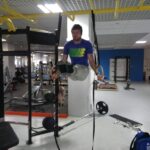Visual and tactile learners often find themselves drawn to different methods of absorbing information. Understanding your preferred learning style can significantly enhance your academic journey. This exploration delves into the characteristics of visual and tactile learners, offering insights and strategies to optimize learning based on these preferences.
Visual Learning: Seeing is Believing
Visual learners thrive when information is presented in a way they can see. This could involve reading texts, examining diagrams, or watching demonstrations. They often visualize concepts in their minds and benefit from clear, concise visual aids. If you find yourself easily recalling information from charts, graphs, or pictures, you might be a visual learner.
Here are some techniques to maximize learning if you identify as a visual learner:
- Utilize visual aids: Incorporate flashcards, diagrams, charts, and videos into your study routine.
- Create mental pictures: Try visualizing concepts as you learn them, forming mental images to solidify understanding.
- Write and draw: Note-taking and sketching can help translate abstract ideas into concrete visual representations.
- Color-code information: Assign different colors to key concepts or categories to improve organization and recall.
- Minimize visual distractions: A clutter-free and organized learning environment can significantly improve focus.
Tactile Learning: Hands-On Exploration
Tactile, or kinesthetic, learners prefer a hands-on approach to learning. They learn best through physical interaction and movement. If you find yourself fidgeting, doodling, or needing to walk around while studying, you might be a tactile learner. Experimentation, building, and direct involvement are key to their understanding.
Here are some strategies for tactile learners to enhance their learning experience:
- Incorporate movement: Don’t be afraid to pace, fidget, or use a stress ball while studying. Physical activity can aid concentration.
- Use manipulatives: Engage with physical objects like flashcards, building blocks, or models to represent concepts.
- Hands-on activities: Participate in experiments, build projects, or engage in role-playing to solidify understanding.
- Take frequent breaks: Short, active breaks can help maintain focus and prevent mental fatigue.
- Utilize technology: Interactive simulations and online tools can provide tactile learners with engaging learning experiences.
Beyond Labels: Embracing Diverse Learning Methods
While understanding your learning preferences can be valuable, it’s crucial to remember that these are just preferences, not limitations. Most individuals learn through a combination of styles. Don’t restrict yourself to a single label. Experiment with different techniques and explore various approaches to discover what works best for you in different situations. The key is to embrace a flexible and adaptable learning approach that incorporates diverse strategies to maximize your academic potential.
